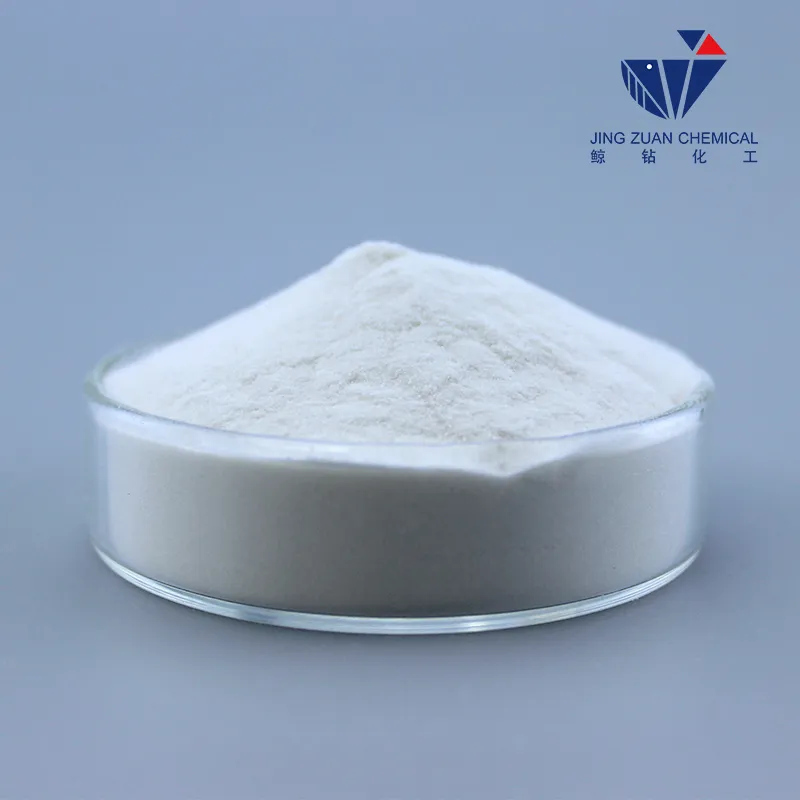
Jan . 02, 2025 09:13 Back to list
hydroxy methyl propyl cellulose
Understanding Hydroxy Methyl Propyl Cellulose A Comprehensive Overview
Hydroxy Methyl Propyl Cellulose (HMPC) is a versatile polymer derived from cellulose, a natural polymer obtained from plants. It belongs to a broader category of cellulose ethers, which are modified forms of cellulose designed to enhance certain properties for various applications. With its unique characteristics, HMPC plays a vital role in industries ranging from pharmaceuticals to food processing and construction.
Chemical Structure and Properties
HMPC is formed by introducing hydroxy and methoxy groups into the cellulose backbone. The degree of substitution (DS) of these groups determines the physical and chemical properties of the polymer. This modification leads to increased solubility in water and organic solvents, making HMPC an excellent agent for thickening and stabilizing solutions. Typically, HMPC is available in various viscosity grades, allowing users to select a formulation that best suits their specific needs.
One of the standout properties of HMPC is its ability to form gels at higher temperatures, a behavior that is critical in many applications. Additionally, it is non-ionic, meaning it does not carry an electrical charge in solution, which prevents it from engaging in undesired ionic interactions with other substances. As a result, HMPC is regarded as a stable additive in various formulations.
Applications in Pharmaceuticals
In the pharmaceutical industry, HMPC is commonly used as an excipient—a substance formulated alongside the active ingredient for the purpose of bulking up formulations that contain potent active ingredients. HMPC serves as a binder and film-forming agent in tablet formulations, enhancing the mechanical strength of tablets and ensuring controlled release of the medication. It is also used in ophthalmic solutions as a lubricating and thickening agent, providing comfort to patients using eye drops.
Additionally, HMPC plays a crucial role in the development of controlled-release drug formulations. Its gel-forming capability allows for the sustained release of active pharmaceutical ingredients (APIs), improving the therapeutic efficacy while minimizing side effects. These characteristics make HMPC a valuable component in developing innovative drug delivery systems.
hydroxy methyl propyl cellulose

Role in Food Processing
In the food industry, HMPC is used for its thickening, stabilizing, and emulsifying properties. It is often utilized in gluten-free products to improve texture and mouthfeel, enabling a desirable consistency that mimics traditional wheat-based products. The polymer helps retain moisture, extending the shelf life of baked goods and other food items.
Moreover, HMPC serves as a fat replacer in low-fat and reduced-calorie products, contributing to the creaminess and body typically associated with full-fat foods. Its non-toxic nature and safety profile make it an ideal ingredient in food formulations, aligning with consumer preferences for clean-label products.
Construction and Other Industries
Beyond pharmaceuticals and food, HMPC is gaining traction in the construction industry, particularly in the formulation of cement-based products. It enhances the workability of mortars and plasters while providing better adhesion and water retention. This results in improved flexibility and reduced cracking, leading to longer-lasting construction materials.
HMPC is also finding applications in personal care products, such as creams and lotions, where it functions as a thickener and stabilizer. Its ability to create smooth textures is highly sought after in cosmetics, ensuring that products remain homogenous and aesthetically pleasing.
Conclusion
Hydroxy Methyl Propyl Cellulose is a multifaceted compound that has carved out a niche across various industries due to its unique properties and performance capabilities. As the demand for innovative and efficient formulations grows, the importance of HMPC is likely to increase, driving further research and development. Whether in pharmaceuticals, food processing, construction, or personal care, HMPC remains an essential ingredient in creating products that meet the evolving needs of consumers and industries alike. Its safety, versatility, and effectiveness ensure that it will continue to be a significant player in the world of chemical additives for years to come.
-
tile-bonding-additives-for-stronger-bonds
NewsAug.22,2025
-
construction-grade-rdp-for-wholesale-needs
NewsAug.22,2025
-
trusted-wholesale-hec-partners
NewsAug.22,2025
-
hec-solutions-for-industrial-excellence
NewsAug.22,2025
-
construction-additives-need-hpmc-essentials
NewsAug.22,2025
-
hpmc-versatile-cellulose-ether-for-industries
NewsAug.22,2025







